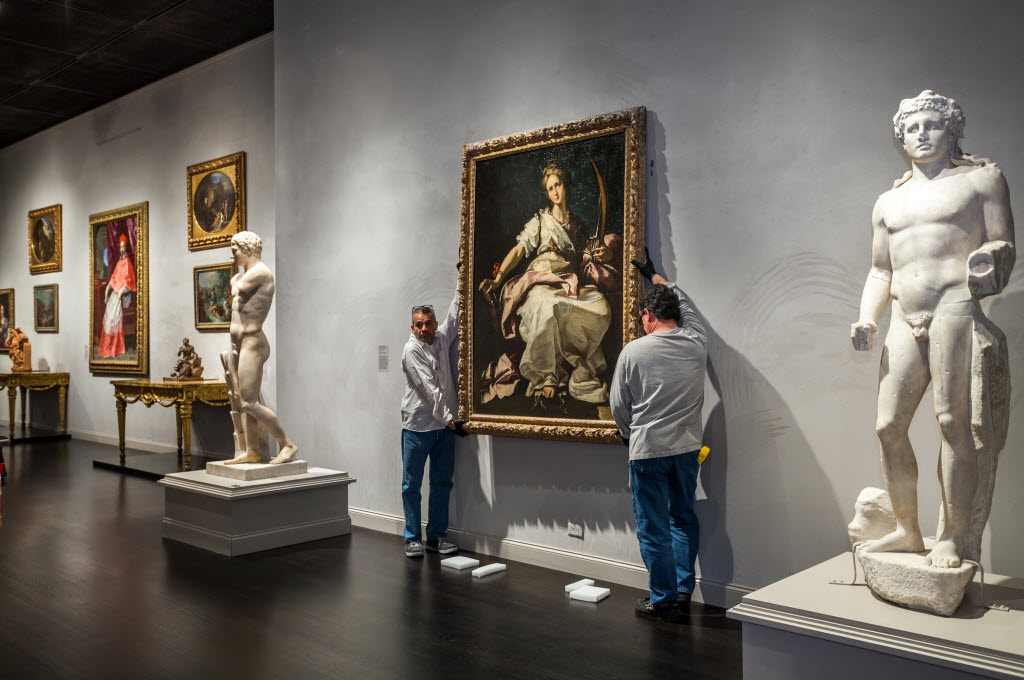WASHINGTON – Simon Goodman estimates he’s recovered about 20 paintings, 10 silver-gilt sculptures and nearly 300 antiques in his effort to reclaim family heirlooms the Nazis took from his grandparents during World War II.
“About the same amount is missing from my family’s collection,’’ Goodman said Monday, the day before he will testify at a Senate hearing on legislation that would aid families seeking to recover artwork and other antiques stolen by the Nazis.
Under the Holocaust Expropriated Art Recovery Act of 2016, the statute of limitations for those families would be reset to start when a looted artwork is found. The original owners would then have six years to complete their claims under the bipartisan legislation authored by Republican Sens. John Cornyn and Ted Cruz of Texas and Democratic Sens. Chuck Schumer of New York and Richard Blumenthal of Connecticut.
Actress Helen Mirren and billionaire businessman and philanthropist Ronald Lauder also will testify at Tuesday's hearing.
Tens of thousands of paintings, sculptures, silver and gold items and pieces of antique furniture are still missing after being taken between the time the Nazi Party began its rise in the 1930s and the end of World War II in 1945. Many found their way to private collections and museums in the United States. The total number worldwide is uncertain.
“A lot of it comes down to definitional questions,’’ said Greg Bradsher, senior archivist at the National Archives and Records Administration.
Many of the artworks haven't been reclaimed, but their general -- and sometimes specific -- locations are known. For instance, U.S. authorities seized a German collection on display in Buffalo, N.Y., during WWII that is now at Arthur M. Sackler and Freer Gallery of Art in Washington. The collection still has not been reunited with the original owner.
After the Hungarian Revolution of 1956, the Russians gave back about half of the 250,000 pieces of art that Soviet trophy brigades seized from Germany. The other pieces remain in Russia.
“There’s also the issue of soldiers from every country taking paintings off walls of farmhouses,’’ Bradsher said. “Each painting probably doesn’t have any monetary value, but to the family who lost it, it does. It’s probably impossible to say the exact number.’’
Forty major works of art are listed as still missing by the Monuments Men Foundation, including a painting by Paul Cezanne, two by Claude Monet and one by Vincent van Gogh. Two are sculptures by Auguste Rodin.
Goodman has written a book (The Orpheus Clock) about his ordeal recovering family heirlooms owned by his grandparents, Fritz and Louise Gutmann. As heirs to a German-Jewish banking dynasty, their collection included works by Botticelli, Degas and Renoir.
The Gutmanns, originally Jewish, converted to Christianity but were kept under house arrest by the Nazis until 1943, according to their grandson. Some of their valuables were sold through a forced sale, with Fritz Gutmann under the impression he would receive an exit visa to Italy in exchange.
“He didn’t get the ticket to Italy,’’ said his grandson. “He got a ticket to a concentration camp instead.’’
What little money the Gutmanns received was put into frozen bank accounts. The accounts were designated as Jewish assets and later, as abandoned assets that were sent to Berlin and converted into war bonds.
“A lot of it was covered in a veneer of legality,’’ said Goodman. He estimates the combined value of his grandparents’ original holdings and a family trust at around $500 million.
“I got nothing until I started fighting for it,’’ he said.
In 1998, the United States agreed to the Washington Conference Principles on Nazi-Confiscated Art, a set of nonbinding principles encouraging “a just and fair solution’’ for compensating pre-World War II owners of art and other valuables, or returning the art to them.
At that time, the United States and other countries were beginning to unseal their records of the artwork that had been recovered at the end of the war.
Only 39 claims involving art looted by the Nazis have been litigated in the U.S., according to New York attorney Pierre Ciric. Eight resulted in restitution through a court order or settlement, and seven resulted in a financial settlement. In 18 cases, the family's claim was dismissed or withdrawn. The other six cases are pending.
Ciric represented Leone Meyer of France in a claim against the University of Oklahoma, which settled her claim in February by agreeing to transfer title to her of the 1886 impressionist painting La Bergere by Camille Pissarro. Under the settlement, the painting will be displayed in France and at the University of Oklahoma for alternating five-year periods. Meyer eventually will give the painting to an art institution in France.
Ciric said the settlement was reached in part because “my client was determined to fight until every possible legal option was exhausted.’’
But many claims are denied, according to Thomas R. Klein, a Washington-based attorney who has represented both claimants and museums.
“There’s a sense that museums or collectors are too mechanical in applying the statute of limitations without thinking of the overall context of these Holocaust-related claims,’’ Klein said. “The feeling is that claimants are not getting a full day in court. This is a broad problem that cries out for a systemic solution.’’
--
Contact Brian Tumulty at btumulty@gannett.com Twitter: @NYinDC

![Nazi looted art [image : 85526452]](http://www.gannett-cdn.com/-mm-/1163316574a27fc140731692007a2474830ed8b2/c=0-778-2398-2828/local/-/media/2016/06/06/USATODAY/USATODAY/636008296510364225-111-SC-204516-xl.jpg)

